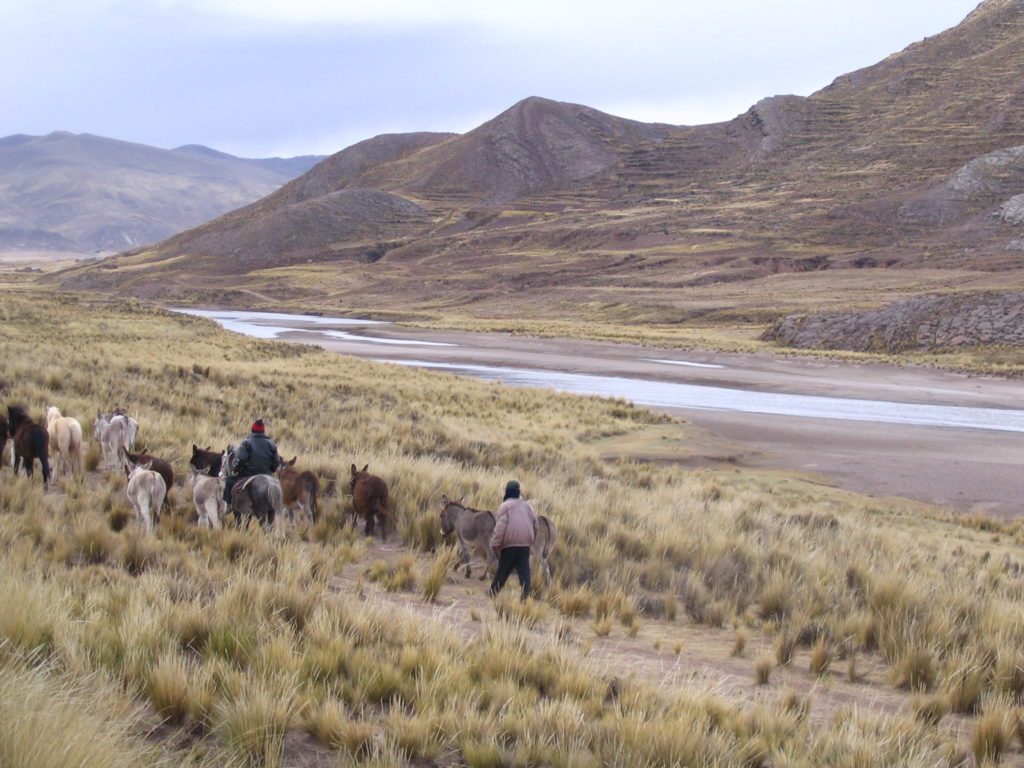Acknowledgements
This research was supported by a grant from the Cal Poly College of Liberal Arts Summer Undergraduate Research Program, the Cal Poly Latin American Studies Program, and our 3 faculty advisors: Dr. Fricker, Dr. Keese, and Dr. Timms.
Introduction
United Nations data indicate that 31% of the world’s total
land area remains forested (FAO 2020). However, since 1990
deforestation reduced that area from what was 49%.
Deforestation is a widespread problem in the Andes
Mountains of Peru. The planting of trees on deforested lands,
or reforestation, is an important tool to increase the
production of wood and as a means to promote conservation
objectives. The primary purpose of this paper is to conduct a
review of the literature to examine reforestation efforts using
eucalyptus, pine, and native species in rural communities in
the Peruvian highlands.
Environments of Peru
Peru is a South American country with a population of 32.8
million people. Peru’s forest cover ranks number 9 in the
world among all countries and is the 2nd-most in the Latin
America after Brazil (FAO 2020). Topographically, Peru is
divided into three geographic regions: The arid desert region
on the coast; the elevated Andes Mountain region (referred to
as the Sierra); and the rainforests of the Amazon region,
which encompasses 59% of Peru’s territory. Owing to its
varied environments, Peru stands out for its incredible
biodiversity, both for the number of species and unique or
endemic species. Peru is one of just 17 so-called megadiversity
countries, and the Sierra is part of the Tropical Andes
Biodiversity Hotspot. However, deforestation is a serious
problem. 20% of the forest cover of the Peruvian Amazon has
been lost, and in the Sierra, 90% of the area is already
deforested. Given the global concerns over biodiversity loss
and climate change, Peru has become a focus of recent
conservation effort
Theoretical Framework
Study Area
Research Team


Sponsors




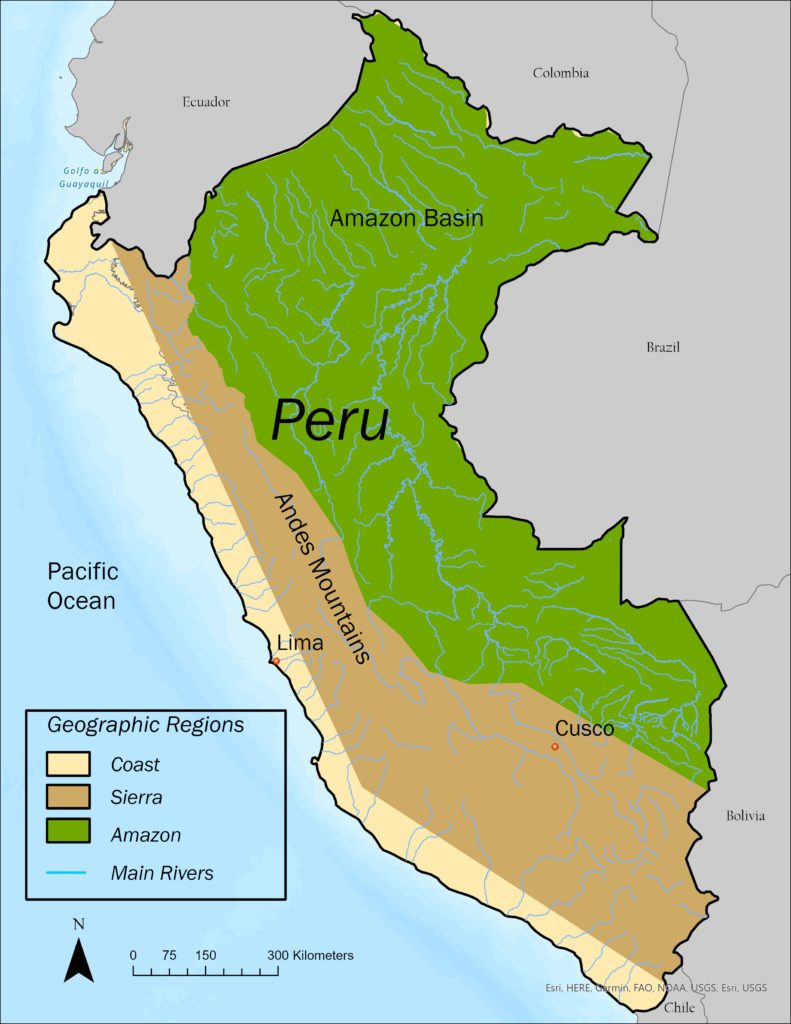
Environments of Peru (Map by Edson Morales)
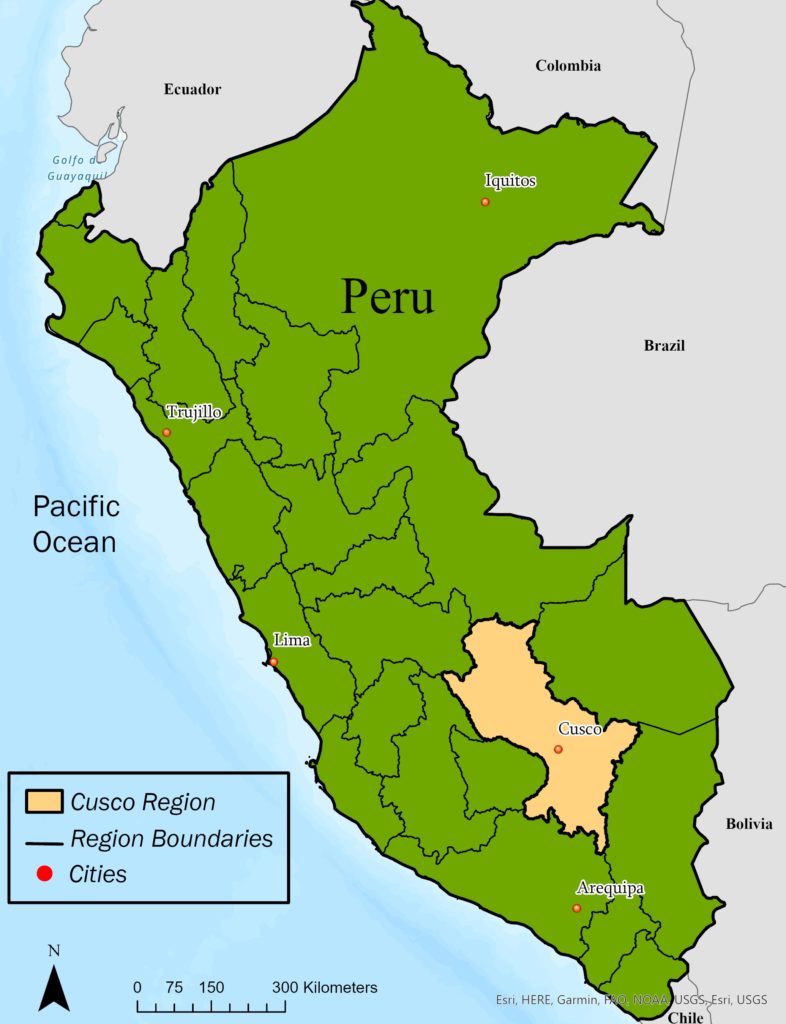
Study Area (Map by Edson Morales)
Tree Species
The predominant tree species used for reforestation in the study area
are eucalyptus, pine, and native Andean species (Guariguata et al. 2017)
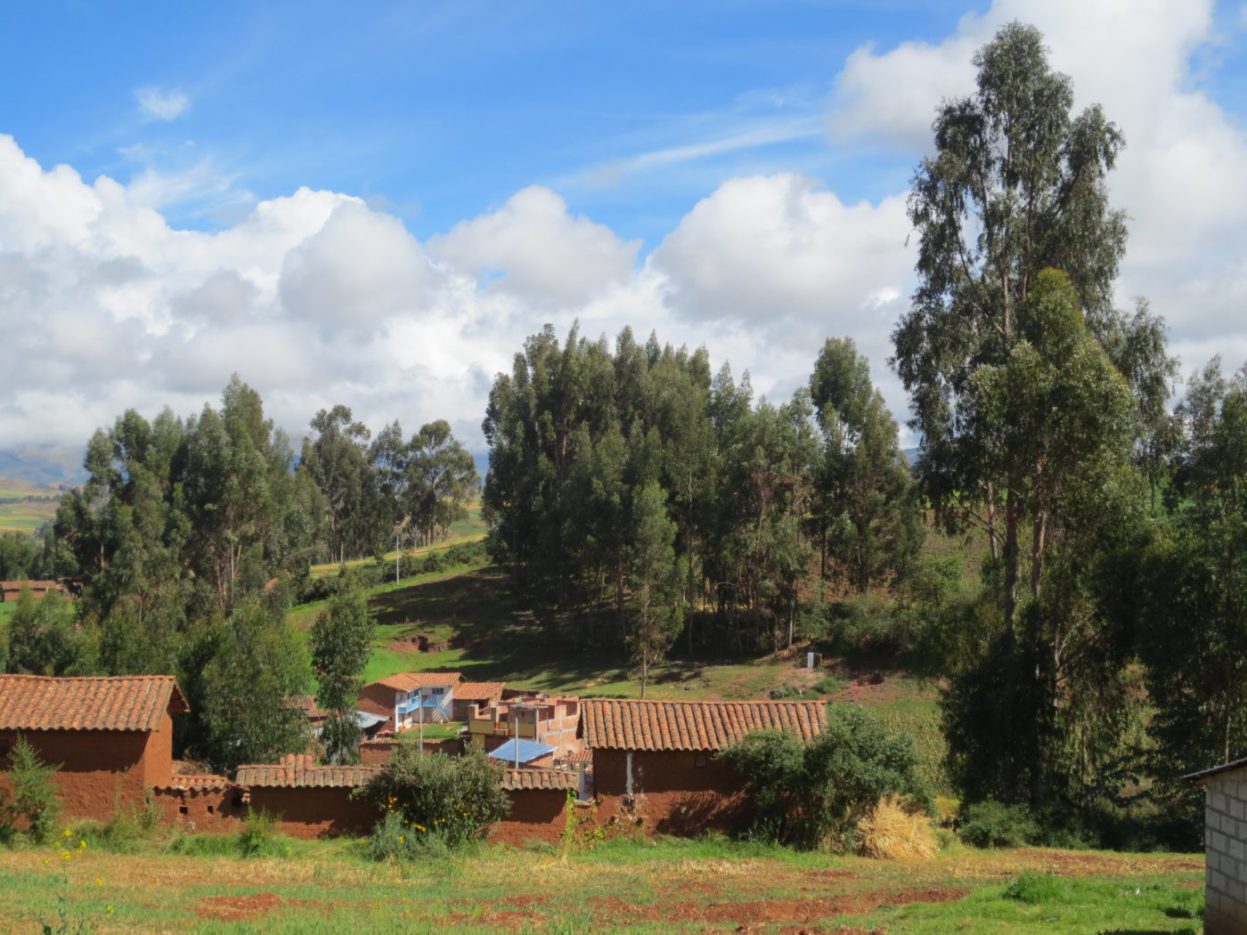
Eucalyptus (E. globulus) was first introduced in Peru in the 1860s and
widely planted since the 1960s. People prefer it because it grows quickly,
self-propagates after cutting, burns easily, and grows on marginal lands.
However, it is criticized for depleting water and damaging soils
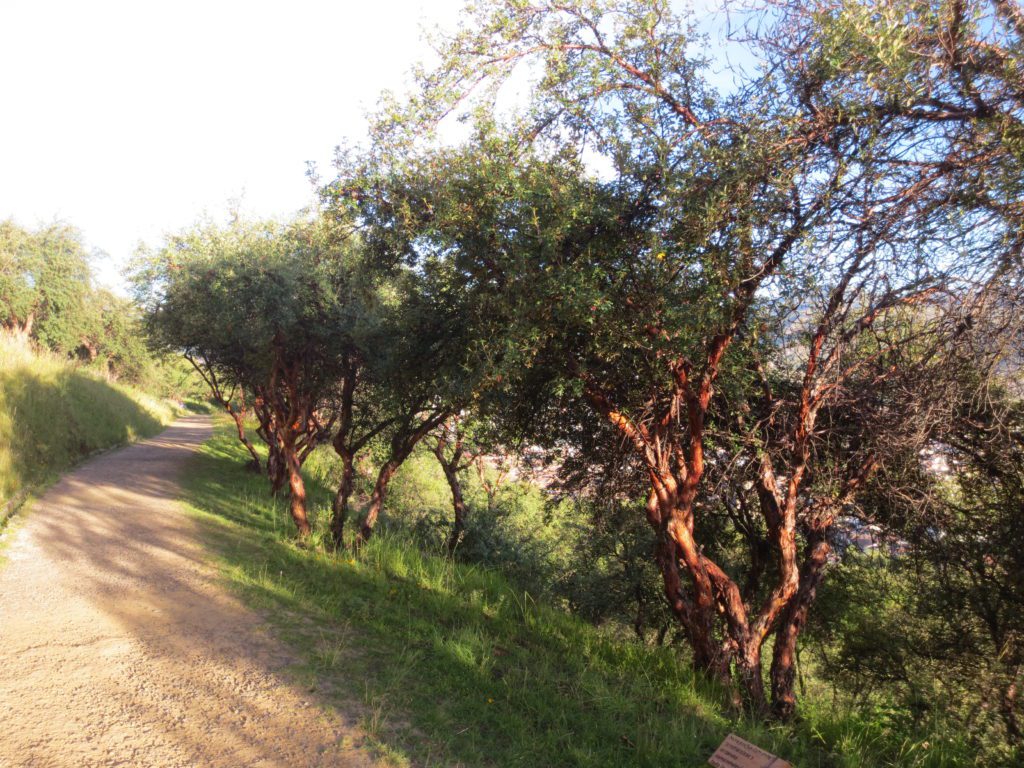
Native tree species of the Andes region (Polylepis spp. and Alnus spp.)
vary geographically but are associated with tree-line grasslands and
tropical montane cloud forests. They have important ecological benefits
such as heightened carbon sequestration, soil and water conservation,
and provide vitally important habitat for biodiversity. However, native
trees take longer to cultivate, do not grow straight, and fail to yield
enough wood to support community needs.
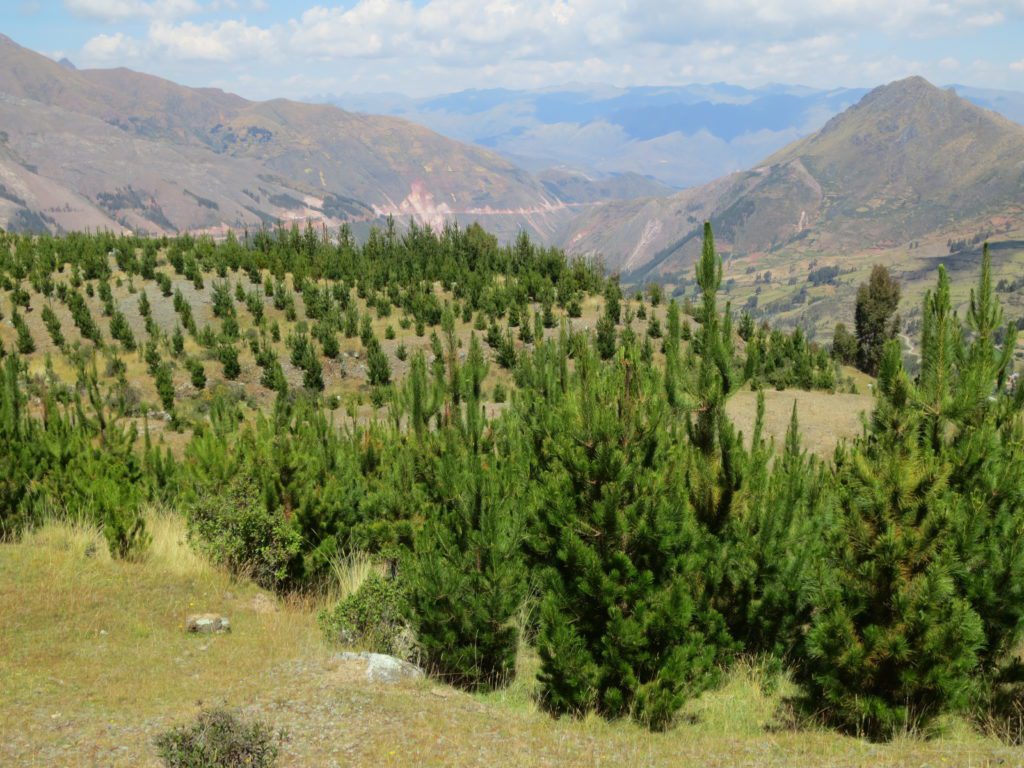
Pine (Pinus radiata and Pinus patula) first appeared in Peru in the 1940s
and is similarly easy to cultivate. Growing well at higher elevations
(above 12,000 ft), pine is fast growing, adaptable, and reduces erosion
with its strong root structure. Yet, it can also deplete water, soil
nutrients, biodiversity, and acidify the soil. It is also extremely invasive.
Deforestation Rates

Conclusion
This research has revealed a dual economy within the Peruvian forestry sector. In terms of wood production and profit, the state and forestry industry’s focus are on the Amazon region, which contains 92% of Peru’s forests (ITTO 2011). 95% of the country’s commercial timber output comes from the Amazon, rendering the eucalyptus and pine plantations in the Andes trivial in comparison (SERFOR 2020). However, to the local, marginalized population of the Andean Sierra, these plantations are essential to their livelihoods.
This research also highlighted the central role of trade-offs. Eucalyptus and pine generate wood production, but at the expense of the surrounding environment. Similarly, native species are ecologically advantageous but cannot be relied upon to alleviate the scarcity of wood. The tension between different actors, including local populations, the state, industry, and environmental NGOs, reveals the most notable tradeoff — that between conservation and human livelihoods.
Despite growing awareness of the environmental consequences of eucalyptus and pine plantations, the Peruvian government continues to promote these exotic species. Meanwhile, local NGOs are committed to reforesting lands with native species, which have superior ecological benefits, but lower production value. Perhaps a blended approach could be promoted that uses native species for reforesting critical habitat and carbon sequestration, while using exotics for wood production needs.
In order to manage such tradeoffs, inclusion of the local communities is essential. Any solution will need to involve partnership with marginal groups which have been heretofore neglected in these decisions.
Further research will use satellite imagery and GIS to quantify reforestation and the change in forest cover in the Cuzco Region.
References
FAO (United Nations Food and Agriculture Organization). 2020. Global Forest Resource Assessment 2020: Main
Report. Rome.
Guariguata, M., Ammour, T., Arce, J., Capella, J. 2017. Las plantaciones forestales en Perú Reflexiones, estatus
actual y perspectivas a futuro. Centro para la Investigación Forestal Internacional (CIFOR), Documento Ocasional
169.
ITTO (International Tropical Timber Organization). 2011. “Peru” in Status of Tropical Forest Management 2011.
Luzar, J. 2007. “The Political Ecology of ‘Forest Transition’: Eucalyptus forestry in the Southern Peruvian Andes.”
Ethnobotany Research & Applications. 5: 85-93.
Rudel, T. 2009. “Tree farms: Driving forces and regional patterns in the global expansion of forest plantations.”
Land Use Policy. 26: 545-550.
SERFOR (Servicio Nacional Forestal y de Fauna Silvestre del Perú). 2020. Anuario Forestal y de Fauna Silvestre.
Peruvian Ministry of Agriculture and Irrigation.

